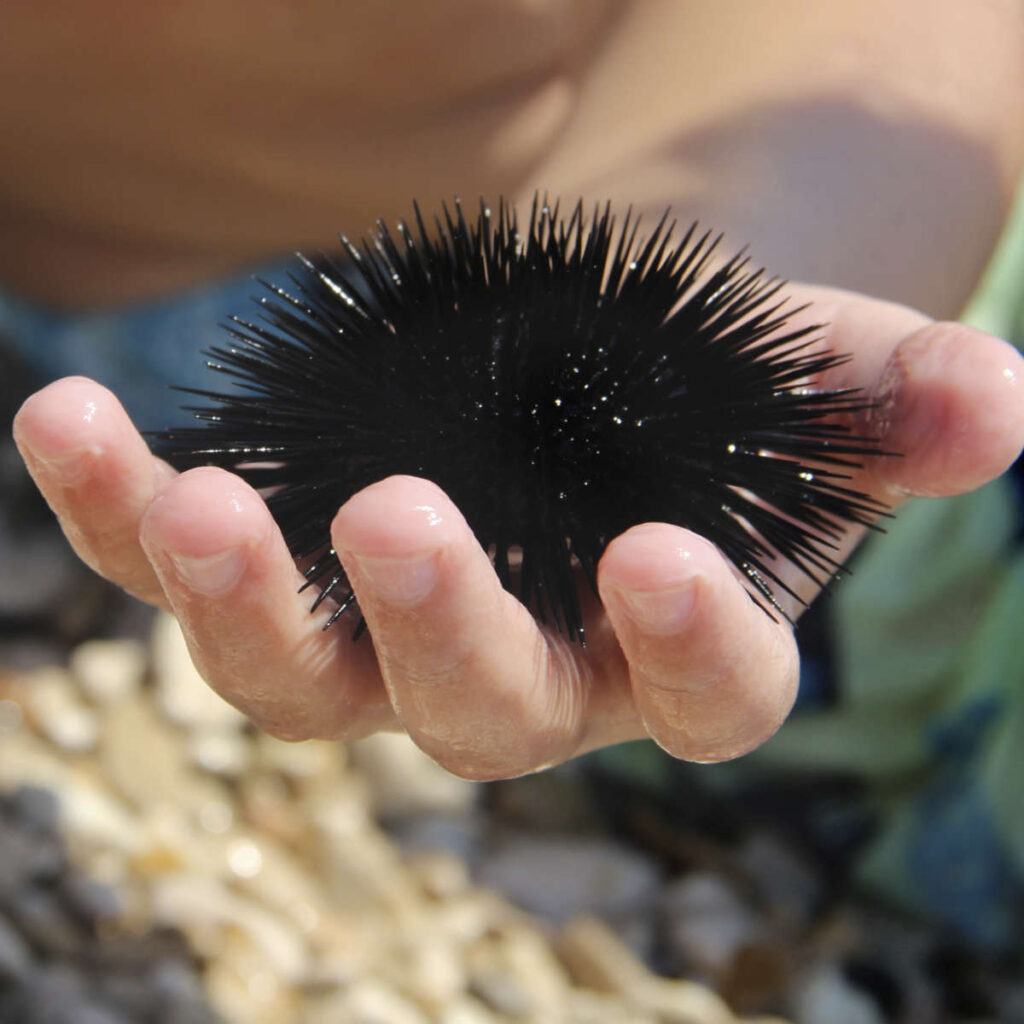Last Reviewed and Updated on July 8, 2022
Sea urchins are invertebrates that belong to the Echinoidea family. They are covered by a hard shell that offers protection from predators and digging. Sea urchins are also called “sea hedgehogs” because of their spikes, which give them the appearance of hedgehogs.

Want to know even more about them? Read through these fascinating facts about sea urchins.
1. There are about 950 different species of sea urchins
We are kicking off this list of facts about sea urchins with some numbers. If you thought there were only one species of sea urchins, you would be quite off. There are currently about 950 different known species of sea urchins.
2. Sea urchins only live in saltwater
If you go to the beach you might be warned to watch your step as you go into the water, as there may be sea urchins about. But you don’t have to worry about it if you take a dip in a lake, a river or a pond. Sea urchins can only live in saltwater. There are no species of sea urchins that can live in freshwater.
3. They were named after hedgehogs
This comes as no surprise at all seeing how they share a very important visual similarity. In old English, hedgehogs were called urchins, and it’s this name that inspired the naming of sea urchins.
4. They can see despite having no eyes
Talk about freaky! They have light-sensitive cells on their body and they are able to get a sense of their surroundings with the help of these cells.
Think this is weird? You are going to love our list of weirdest animal facts.
5. Sand dollars are sea urchins as well
Not all sea urchins are spiky balls and a sand dollar is a wonderful example. Sand dollars are a species of flat, burrowing sea urchins.
6. Their spines are usually hollow
And when we say spines, we mean the spikes, not the spine like you see in humans and other vertebrates. Sea urchins don’t have spines or any other bones for that matter.
7. They don’t have brains
This is one of the most interesting facts about sea urchins. They are one of the few animals that don’t have a brain. Sea urchins lack many other organs you would normally see in animals, they don’t have lungs or gills nor do they have a heart. They also don’t have a drop of blood in their bodies.
Learn which are some other animals that don’t have a brain.
8. Fun sea urchin fact: they have 5 teeth
They may lack many organs but they do have a set of teeth. These teeth continue to grow throughout their lives and are self-sharpening.
9. Their mouth (chewing organ) is known as Aristotle’s lantern
The organ is named after the famous philosopher Aristotle who may be the first to describe the organ.
In his work Historia Animalium there are a few lines describing the anatomy of a sea urchin, however, it is uncertain if he was referring to the mouth specifically or if he was referring to the whole body.
“In respect of its beginning and end the mouth/body of the urchin is continuous, though in respect of its superficial appearance it is not continuous, but similar to a lantern not having a surrounding skin.”
10. Their mouths are on the bottom and their anus is on the top
Not your everyday position of the two. Their mouths are on the underside of the body and the waste is expelled through the hole on top of their bodies.
11. There are no visual distinctions between male and female sea urchins
Without the use of a microscope or another magnifying object (or dissection), there is no way to tell the gender of a sea urchin. Both females and males look alike.
These animals reproduce externally, the female lays eggs and the male spreads sperm on the eggs, if you would observe their reproduction you would be able to tell which sea urchins are male and which are female.
12. They have venom in their spikes
As if stepping on something spiky isn‘t painful enough… Sea urchins have venom in their spikes. Most won’t cause you much harm (but will cause pain). The flower urchins (Toxopneustes pileolus) on the other hand have strong toxins and are highly dangerous to humans. Their stings are extremely painful and can cause respiratory problems and even paralysis.
13. They can go bald due to a disease
The bald sea urchin disease is a bacterial disease that affects many species of sea urchins. The affected area on the sea urchin loses spines and appendages. If the disease isn’t too far spread and covers less than 30% of the sea urchin’s body, the animal is likely to survive and eventually regenerate.
14. They have been found as deep as 6850 meters
They can inhabit a wide range of seabed habitats and have been found at extreme depths.
15. Sea urchins live in all climates
They live in warm climates and even in polar oceans. Most species live in temperate and tropical coasts though.
16. A group of sea urchins is a herd
See many sea urchins in one place? You can call them a herd of sea urchins.
